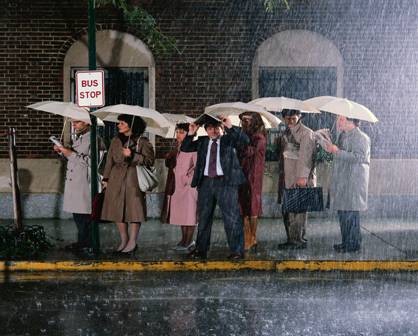Data & Research February 6, 2008
When it Rains
Believe it or not, it actually rains less on weekends.
Reported by Nevin E. Adams
More precisely, it apparently rains more in the southeastern United States midweek than on weekends, according to a new study.
The study was carried out by atmospheric scientist Thomas Bell of NASA’s Goddard Space Flight Center in Greenbelt, Maryland and his colleagues. According to LiveScience.com, they looked at data collected by NASA’s Tropical Rainfall Measuring Mission satellite from 1998 to 2005 – and found that it rains, on average, more between Tuesday and Thursday than from Saturday through Monday. The clearest day of the week was Saturday, with nearly twice the rainfall on the wettest day, Tuesday afternoon, according to the report.
The Cause
Even more interesting – a suggestion that the cause of this phenomena – could be the air pollution created by the commuters and business operations.
The researchers made this connection by comparing the rainfall trend with corresponding air-pollution records from the U.S. Environmental Protection Agency. According to LiveScience, they specifically analyzed particulate matter, or the airborne particles associated with pollution, finding that between 1998 and 2005 air pollution tended to peak midweek as well.
Of course, “If two things happen at the same time, it doesn’t mean one caused the other,” Bell said, according to the report. “But it’s well known that particulate matter has the potential to affect how clouds behave, and this kind of evidence makes the argument stronger for a link between pollution and heavier rainfall.”
Those particles help clouds to grow – and, as water clings to the particles, additional water droplets form. However, some researchers think increased pollution thwarts rainfall by dispersing the same amount of water over more “seeds’, preventing them from growing large enough to fall as rain. But in the Southeast, the researchers said that summertime conditions for storms are already in place, overriding this buffering effect from scattering.
The results were published in the January 31 issue of the Journal of Geophysical Research-Atmospheres.
